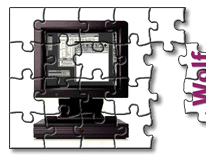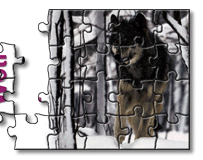
| 17. October 2000, Tomi Engel | |||
 |
|||
They are beautiful even without much color and these guys are neither lazy nor slow. At times their performance is so outstanding that we might even fear them being around, even when they are the origin of things which we like to keep at home (Mac OS X or our beloved dog).


NeXTstation TurboThis system was truly amazing and there was (still is?) nothing which even came close in overall elegance and usability. Back in 1992 the entire competition was fearing the NeXT system, but without a large enough installed base even the greatest technology is doomed.
At 33 Mhz the NeXT hardware reached its maximum performance. Faster "black" models (like the dual RISC-CPU brick) never made it into production. In order to get faster OPENSTEP machines than this one you had to wait a few year to buy an Intel box or one of those really expensive HP Geckos or Sun SPARCstations. But even today this pizza box is a really useful workstation. As far as editing PostScript or regular text processing is concerned If you read the old sales brochure carefully, you will notice that the screen shot shows a husky ... which is more or less a domestic wolf. A funny coincidence which we just noticed recently. |
Canis lupusLet us be honest. We fear them. If there is one thing that we do not want to meet on our winter hike through the forest, than it would be the wolf. But maybe we should remember that every dog is, more or less, a wolf and that not all the fairy tales are true.
There are not just many subspecies of the grey wolf but also many well known sub-populations of a particular species. Their numbers differ significantly: from being "considered a pest" to "almost extinct". Of the 36 known subspecies about 10 are already extinct. Especially here in Europe the habitats are being destructed and the remaining wolf populations should be considered highly threatened. A good link collection about wolf resources can be found at Wildlife Search. Jim Brandenburg, a respected wildlife photographer, published a number of books which contain beautiful images of an animal which many of us fear ... mainly because of the fairy tales. |



